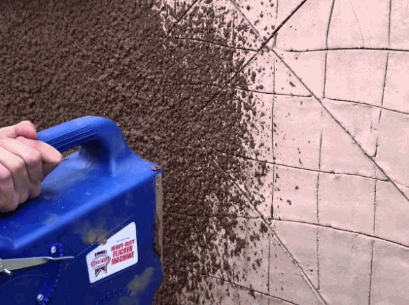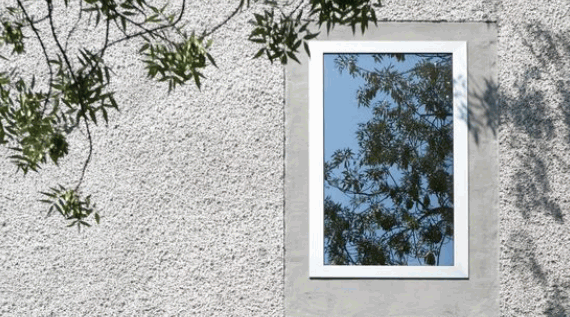
Tyrolean rendering is a unique and versatile finishing technique that adds both character and protection to exterior walls. This method involves applying render to wall surfaces to create a Tyrolean finish that stands out for its durability and aesthetic appeal.
With its textured appearance and durability, Tyrolean render has become a popular choice among homeowners and builders alike. A rendering service provider often recommends this method for its effective weatherproof barrier and crack prevention benefits.
This article explores the benefits of Tyrolean rendering, the various types available, and the step-by-step process for application, including wall preparation and surface cleaning techniques.
Essential rendering tools and common pitfalls to avoid will also be highlighted, ensuring a professional finish that enhances your property’s aesthetic appeal and provides a long-lasting finish coat.
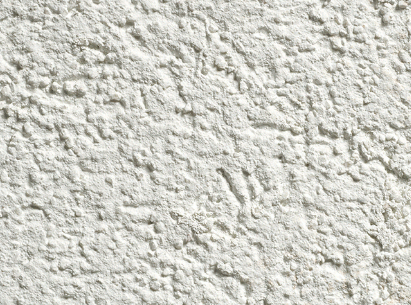
Table of Contents
Tyrolean rendering is a distinctive plastering process known for its unique textured finish, often applied to both residential and commercial buildings. This technique originated in the Alpine regions and has become increasingly popular in the United Kingdom due to its aesthetic appeal and protective qualities.
It involves applying a cement mixture with a Tyrolean flicker gun or machine, creating a durable and weatherproof barrier on various wall surfaces, including exposed brick and internal walls. The method results in a decorative layer that not only enhances the appearance of a home but also provides essential crack prevention and insulation.
Take a look: How Much Does Tyrolean Render Cost
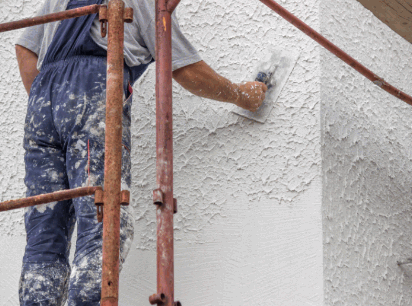
Tyrolean rendering offers a multitude of benefits that make it an attractive choice for homeowners and builders alike. First and foremost, it provides a durable and long-lasting finish that can withstand various weather conditions, including snow, rain, and ice. This makes it ideal for both residential construction and commercial buildings.
Additionally, its textured appearance adds aesthetic appeal to both residential construction and commercial buildings, making it a popular choice in the United Kingdom.
Furthermore, Tyrolean render requires low maintenance due to its effective weatherproof barrier, ensuring that your exterior walls continue to look pristine for years to come.
One of the hallmark characteristics of Tyrolean render is its durability and long-lasting nature, making it a preferred choice for many construction projects, especially in environments where weather conditions can be harsh or unpredictable. Its unique composition plays a crucial role in ensuring that buildings not only stand the test of time but also maintain their aesthetic appeal over the years.
This particular render is formulated with a blend of polymer cement and fine sand, which enhances its resistance against various external pressures. The combination of these materials allows for superior adhesion and flexibility, which minimises the likelihood of cracks and deterioration. This render contributes positively to energy efficiency, ensuring that buildings remain insulated throughout different seasons.
Consequently, by utilising Tyrolean render, homeowners can see significant savings in energy costs over time, making it a financially sensible investment. Applying render with the right techniques and tools can further enhance these benefits.
Tyrolean rendering is renowned for its superior weather-resistant qualities, allowing it to withstand harsh conditions such as snow, rain, and ice, thereby protecting exterior walls from moisture ingress and structural damage.
This protective layer acts as a robust weatherproof barrier that not only enhances the aesthetic appeal of buildings but significantly extends their lifespan. By repelling water and preventing the buildup of ice, it effectively minimises the risk of cracking and peeling, common issues in unpredictable climates.
Homeowners and building managers can greatly benefit from the durability that Tyrolean render offers, as it provides peace of mind against nature’s elements.
Another significant benefit of Tyrolean rendering is its low maintenance, which appeals to both homeowners and general contractors, making it a preferred choice for those seeking long-lasting and aesthetically pleasing solutions for external walls. The use of high-quality, durable materials in the application process ensures the render remains resilient over time.
With Tyrolean render, the efficient application process combined with the use of high-quality, durable materials significantly reduces the need for frequent repairs and upkeep. Homeowners appreciate the way the resilient texture withstands various weather conditions, adding to its appeal. Following proper wall preparation techniques is crucial in ensuring minimal maintenance requirements.
These steps contribute to a strong foundation, allowing the finish to repel moisture and resist the natural wear and tear that might otherwise necessitate more regular maintenance. Ultimately, this makes Tyrolean render a sensible investment for those aiming for long-term durability and efficiency.
Tyrolean rendering provides an aesthetically pleasing finish that enhances the visual appeal of any building, creating a distinct atmosphere that can transform ordinary walls into stunning visual statements. This remarkable technique boasts versatility, taking advantage of various colour mixtures and textured finishes that not only serve functional purposes but also bring character and charm to modern architecture.
The decorative layer plays a crucial role in enhancing the overall aesthetic value of the structure, and its applications are practically limitless. With Tyrolean rendering, one can explore:
Ultimately, the decision to incorporate this method reflects a commitment to both beauty and innovation, allowing the building to stand out or blend seamlessly into its surroundings.
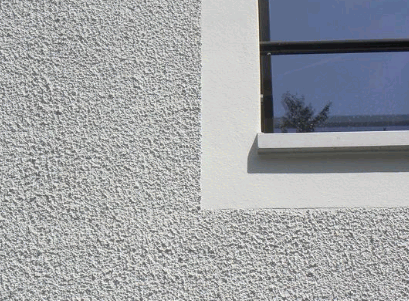
There are several types of Tyrolean rendering that cater to different needs and preferences, making it a versatile option for various construction projects. Each type offers unique finishing effects and application techniques, ensuring a perfect fit for different architectural styles.
Traditional Tyrolean rendering utilises a mixture of cement and fine sand to create a classic look that has stood the test of time, embodying not only aesthetic appeal but also remarkable durability that complements the architecture of alpine homes. This method also integrates well with eco-friendly materials, adding to its long-term appeal.
This historic technique, dating back to the Tyrol region of the Alps, boasts many advantages, especially in terms of weather resistance and thermal insulation. The Tyrolean rendering method is frequently used on both residential and commercial structures, offering a unique texture that blends beautifully with the natural surroundings.
When comparing it to modern alternatives like synthetic render or acrylic finishes, Tyrolean rendering stands out due to its eco-friendliness and longevity. Tyrolean rendering methods also offer versatility in finishing effects, giving buildings a unique textured look.
While contemporary methods might offer ease of application, they often lack the character and charm that this traditional approach brings to any façade.
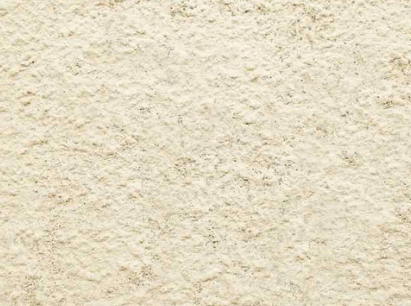
Acrylic Tyrolean rendering, also known as K Rend Tyrolean, is gaining popularity in the construction industry. Acrylic Tyrolean rendering is known for its flexibility and weather-resistant properties, making it suitable for a variety of environments, from coastal areas to urban settings where traditional plaster may deteriorate more quickly due to harsh conditions.
This remarkable choice stands out particularly due to its ease of application compared to traditional methods that often require extensive labour and drying times. More than just a time-saver, its vibrant colour options allow homeowners and builders alike to personalise their projects with remarkable shades that resist fading over time.
The combination of flexibility, stunning colours, and exceptional resilience makes acrylic Tyrolean render a standout option for modern construction and renovation projects.
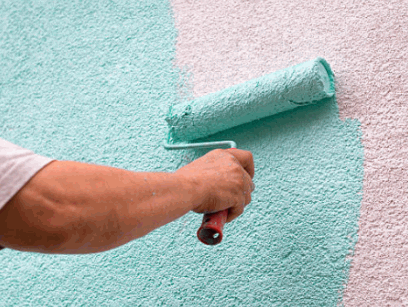
Polymer modified Tyrolean rendering offers enhanced adhesion and improved insulation properties, making it a top choice for modern construction. This type of render is particularly effective on external walls and provides a protective layer that ensures long-term durability.
This innovative approach not only ensures that the Tyrolean render adheres more effectively to various substrates, reducing the risk of cracking and peeling, but also fortifies the structure against harsh weather elements. The incorporation of polymers significantly boosts the durability of the render, enhancing its resistance to moisture and UV rays.
Polymer modified Tyrolean rendering emerges as a versatile solution, offering aesthetic appeal while promoting environmental responsibility.
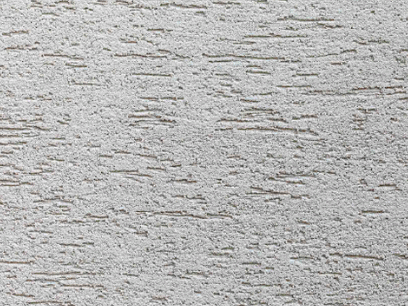
The application of Tyrolean rendering involves a multi-step process that ensures a durable, aesthetically pleasing finish on wall surfaces, much like those in Alpine regions.
Proper preparation of the surface is crucial for the successful application of Tyrolean rendering.
To ensure optimal adhesion of the render, it is essential to follow a systematic process. Begin by thoroughly cleaning the surface to eliminate any dirt, dust, or grease that may hinder adhesion. This can typically be done with a pressure washer or a stiff brush and warm soapy water, which is a crucial step in repair preparation.
Once cleaned, check for any cracks or damage that could affect the quality of the application. It is important to address these issues by filling in gaps with a suitable filler. By diligently inspecting the surface and making the necessary repairs, you significantly reduce the risk of common mistakes, such as pitting or peeling.
By adhering to these preparation steps, the chances of a successful application of Tyrolean rendering greatly increase.
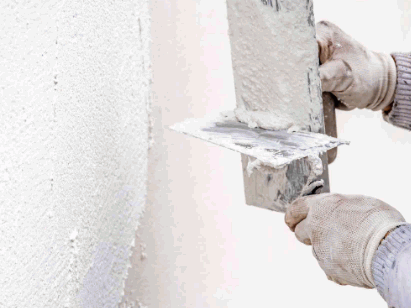
Mixing and applying the render correctly is essential to achieving the desired finish coat and performance. Proper preparation, including undercoat application, and understanding of material composition can drastically affect both aesthetics and longevity.
Regarding mixing ratios for rendering, it is crucial to adhere to the manufacturer's guidelines. Generally, a common ratio consists of:
Utilising a Tyrolean render machine or a Tyrolean flicker gun can streamline the application process, ensuring an even distribution across surfaces. This specialised equipment allows for precise control over the texture and thickness of the render.
To achieve a durable finish, be sure to:
By following these best practices, one can ensure a visually appealing and resilient render finish.
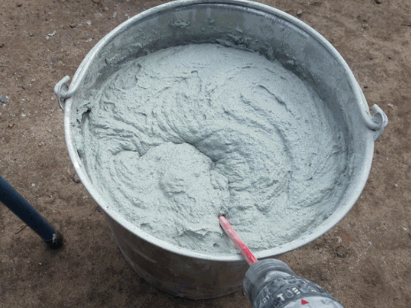
The finishing touches are what truly make Tyrolean rendering stand out, providing both aesthetic appeal and enhanced durability.
Regarding achieving the best results, allowing the render to cure properly is crucial. This process not only ensures that the material bonds well with the substrate but also enhances the longevity of the finish. The use of proper curing techniques, such as misting or covering with plastic sheeting, can make a significant difference in the final appearance.
With different rendering methods available, including traditional, monocouche, and acrylic options, each offers unique benefits and can impact the overall aesthetic.
In addition, attention to detail during the curing phase can unlock a level of durability that ensures the rendering not only looks great but withstands the test of time.
To achieve the best results in Tyrolean rendering, a variety of specialised tools and materials are necessary.
The Tyrolean gun is a key application tool that enables a uniform and consistent finish when applying render.
This innovative device, often favoured in construction and renovation projects, operates by propelling a mixture of sprayed render onto surfaces, ensuring that every square inch receives the same texture and durability. The Tyrolean gun is designed to efficiently apply textured finishes, making it a preferred choice among professionals looking for speed and precision.
Compared to other application methods, such as trowelling or spraying, the Tyrolean gun offers distinct advantages, including less labour intensity and reduced material waste. Therefore, its efficiency makes it an ideal option for larger projects, particularly in commercial construction.
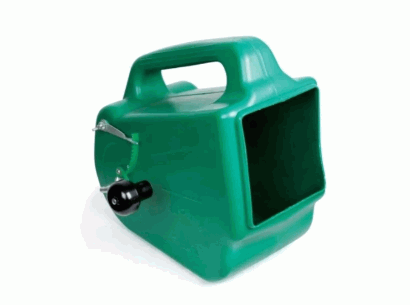
Choosing the right render mix is crucial for the success of Tyrolean rendering, as it determines the final product's appearance and durability, impacting not only the aesthetic but also the structural integrity over time.
When considering different render mixes and types of render, several options come into play, each offering unique benefits tailored for specific applications:
Incorporating polymer cement into the mix significantly enhances performance, offering increased durability, flexibility, and resistance to moisture infiltration, thus ensuring long-lasting results.
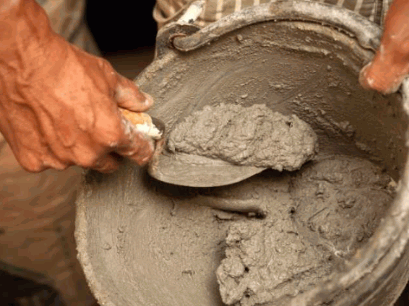
A trowel is an essential finishing tool used in the application process of Tyrolean rendering, playing a pivotal role in determining the outcome of the surface finish. The choice of trowel can significantly influence the texture and aesthetics of the rendered wall, making it crucial for practitioners in this specialised field to understand the different types available. From stainless steel options that provide durability to flexible plastic ones that help create a smoother finish, each type serves a unique purpose.
When selecting a trowel for Tyrolean rendering, consider the following types:
To achieve a perfect Tyrolean finish, adhere to these best practices:
Utilising these techniques will enhance not only the quality but also the durability of the Tyrolean render, ensuring a long-lasting and visually appealing result.
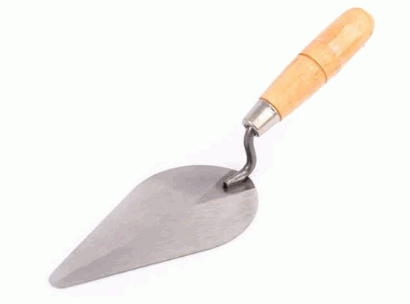
A water hose is an important tool for surface preparation and cleaning during the Tyrolean rendering process.
Before diving into the application of any rendering materials, it is crucial to ensure that all surfaces are meticulously cleaned. Utilising a water hose effectively removes dust, debris, and any loose particles that can hinder proper adhesion. A thorough washing not only enhances cleanliness but also allows for better inspection of the area to be rendered.
Maintaining cleanliness throughout the rendering process is essential, as it guarantees a smooth finish and long-lasting results.
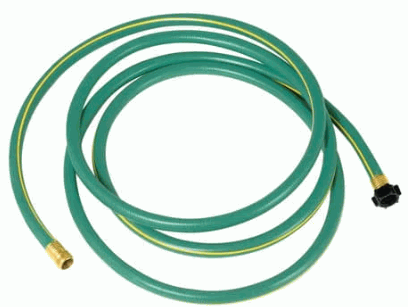
Achieving a professional finish in Tyrolean rendering involves several key steps that require both skill and precision.
Before committing to a full Tyrolean rendering project using materials like Cullamix Tyrolean or K Rend Tyrolean, it is advisable to practise on a small area first.
This initial practise allows one to refine the application technique while becoming familiar with the nuances of the Tyrolean flicker gun. By focusing on a limited space, individuals can experiment with different textures, finishes, and MidRender techniques without the pressure of a larger commitment.
Such a focused approach not only increases confidence but also minimises waste and errors in materials. Mastering the equipment and understanding how the mixtures behave can lead to a more polished result when tackling larger surfaces like those treated with Tyrolean render. As they become adept, it's beneficial to:
Incorporating these smaller practise sessions into the workflow will ultimately enhance the quality of the finished project.
Using the correct pressure and angle with the Tyrolean gun, whether a traditional model or a Tyrolean render machine, is essential for achieving a consistent and professionally rendered finish.
To ensure the best results, users should pay careful attention to both pressure and angle when applying the material. Ideally, maintaining a pressure within the range of 4 to 6 bar is recommended, as this allows for an even spread without excessive overspray. Likewise, holding the gun at a 45-degree angle can enhance coverage while minimising the risk of drips and runs, ensuring a top-notch Tyrolean finish.
Common mistakes to avoid include:
Focusing on these factors will help ensure that the Tyrolean finish is both durable and aesthetically pleasing, akin to the best Tyrolean finishes observed in Alpine regions.
Maintaining a consistent render mix is crucial for achieving a uniform finish during the Tyrolean rendering process. This is particularly important for products like K Rend Tyrolean and Cullamix Tyrolean which require precise mixing.
To ensure that this consistency is achieved, meticulous attention must be paid at every stage of the mixing process. By utilising proper mixing techniques, one can avoid common pitfalls associated with uneven application and textural discrepancies.
It’s essential to regularly check the mix throughout the application to maintain that crucial uniformity, making adjustments as necessary for any variations that may occur.
Smoothing out any imperfections is a vital step in achieving a professional finish in Tyrolean rendering, especially when working on detailed finishing coats that require attention to detail.
To ensure a flawless outcome, one can employ several techniques aimed at identifying and correcting flaws early in the process.
Attention to detail can elevate the quality of the work significantly, making the final result more visually appealing. Integrating these techniques will not only improve the render's appearance but also contribute to its durability and insulated properties, particularly in colder climates like the United Kingdom.
Ultimately, striving for perfection with Tyrolean rendering ensures that the outdoor spaces reflect both beauty and craftsmanship, similar to iconic structures in Alpine regions.
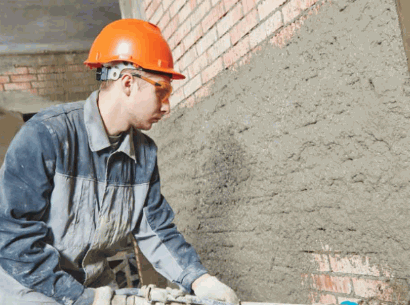
Avoiding common mistakes is key to successful Tyrolean rendering, as errors can lead to unsatisfactory results and increased costs.
One of the most common mistakes in Tyrolean rendering is not preparing the surface properly.
This oversight can lead to a range of undesirable issues that ultimately compromise the quality and longevity of the finish. Proper surface preparation is crucial, as it ensures better adhesion and durability of the render, preventing cracks, peeling, and moisture-related problems.
When the surface is left untreated or improperly prepared, it can create an uneven texture, compromising aesthetics and functionality.
Therefore, investing time in adequate preparation not only enhances the overall appearance but also prolongs the lifespan of the rendered surface.
Using the wrong type of render mix can lead to various issues, including poor adhesion and a lack of durability. For instance, Tyrolean render products like K Rend Tyrolean and Cullamix Tyrolean each have specific mixing requirements to achieve optimal results.
When selecting the appropriate render mix, keep in mind that each application has specific requirements and challenges. For instance, external walls demand a render mix designed to withstand weather fluctuations, while interior spaces might prioritize aesthetics and texture like a Travertine finish.
Therefore, a thorough assessment of the environment and desired finish is crucial. Not only can improper choices result in increased repair costs, but they might also compromise the overall integrity of the structure.
Consider factors such as:
Taking the time to research and consult with professionals can help to ensure that the right mix is selected, avoiding potentially costly mistakes down the line.
Another critical mistake is applying the render too thickly or thinly, which can negatively impact the overall finish, leading to issues such as cracking, peeling, or uneven texture that detracts from the aesthetic appeal of the surface.
Maintaining the correct thickness is essential for achieving a durable and visually pleasing application. To ensure optimal results, it is advisable to follow these guidelines:
By adhering to these practices, one can achieve a stunning finish that not only looks fantastic but also lasts longer. This attention to detail emphasises the importance of maintaining the correct thickness during application, ultimately leading to a more robust and appealing end result.
Not cleaning the rendering tools properly can lead to cross-contamination and poor application results, which can ultimately compromise the integrity of the finished surface and the overall quality of the project.
Maintaining rendering tools is crucial for achieving optimal results and prolonging their lifespan. Over time, dried materials can hinder functionality, resulting in uneven application and costly rework. This is especially true when using tools like a Tyrolean render machine. To ensure effective performance, follow these tips for regular care:
By incorporating these practices into routine maintenance, one can ensure the tools remain in peak condition, ultimately leading to stunning finishing results.
